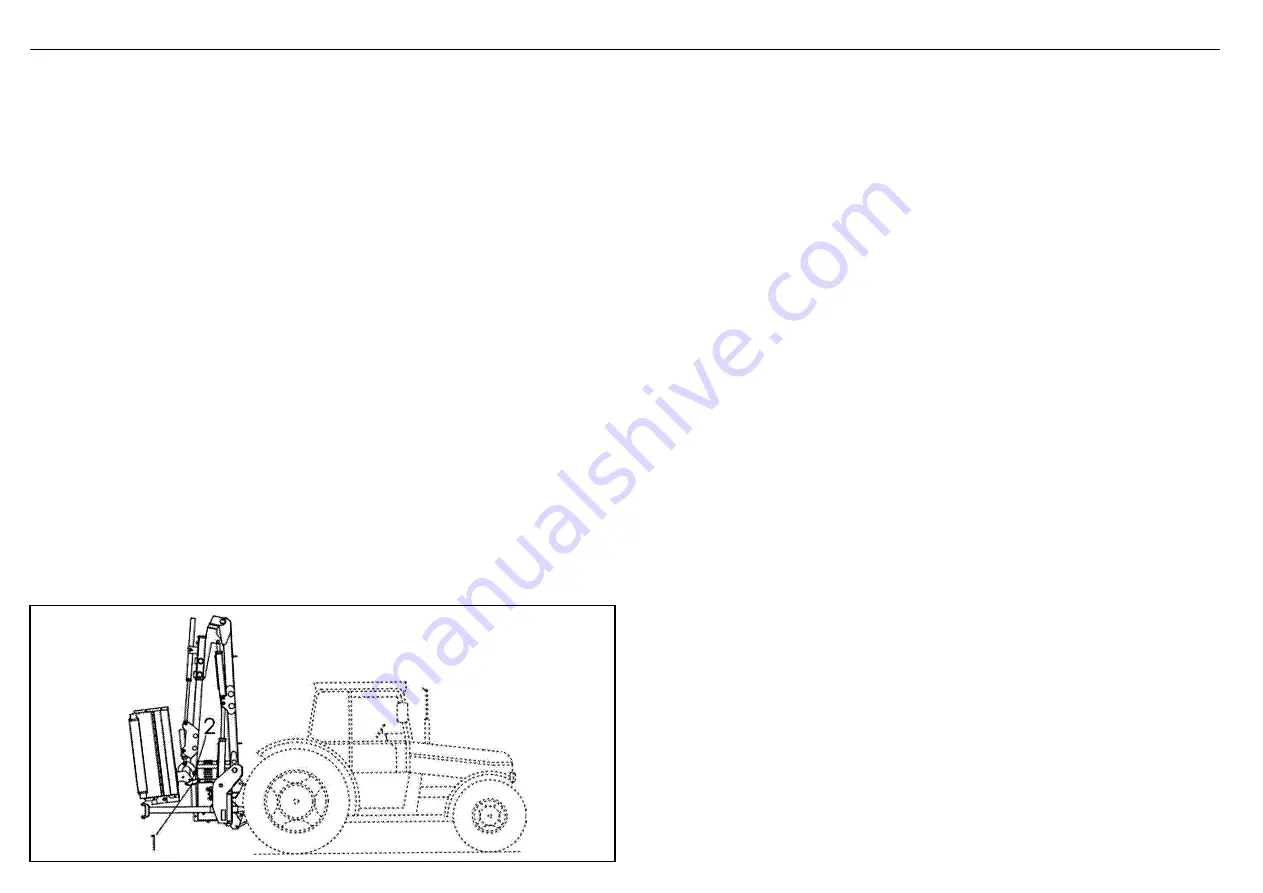
ITALIANO
ENGLISH
40
1) Spegenere il motore del mezzo;
2) Inserire il freno di stazionamento;
3) Togliere la chiave dal quadro di avviamento del mezzo;
4) Scendere e sbloccare il braccio (2 Fig. 29) dal supporto (1 Fig. 29).
3.11.2 OPERAZIONI DI INIZIO LAVORO
1) Avviare il motore del mezzo e azionare la leva innesto presa di forza;
2) portare il braccio in posizione di lavoro tenendo la testata di taglio sollevata dal materiale
da tagliare di circa 50 cm;
3) azionare il comando rotazione rotore testata di taglio secondo l’allestimento della pro-
pria macchina e le relative modalità descritte al paragrafo «Descrizione e impiego co-
mandi»;
4) impostare il senso di rotazione in funzione del materiale da tagliare mantenendo un
basso regime di giri del motore del mezzo;
5) avviare la ventola dello scambiatore di calore impianto oleodinamico (se installato);
6) appoggiare la testata di taglio al terreno accelerando il motore del mezzo affinché la
presa di forza compia i giri/minuto voluti e come targhetta di identificazione della mac-
china e pittogramma relativo;
7) regolare la posizione della testata in modo che si adatti al terreno per avere un taglio
uniforme agendo sull’apposito comando secondo l’allestimento della propria macchi-
na e come da paragrafo «Descrizione e impiego comandi»;
8) azionare a propria discrezione gli opzionali agendo sui relativi comandi secondo l’allesti-
mento della propria macchina e come da paragrafo «Descrizione e impiego comandi».
3.12 DURANTE IL LAVORO
Impostare la velocità di avanzamento in funzione del materiale da tagliare: si consiglia
comunque una velocità non superiore ai 4 km/ora.
Assicurarsi sempre che la ruota del mezzo non sia troppo vicina al ciglio della strada.
1) Switch off the vehicle’s engine;
2) Apply the parking brake;
3) Remove the key from the vehicle’s ignition panel;
4) Get off the vehicle and release the arm (2 Fig. 29) from the support (1 Fig. 29).
3.11.2 OPERATIONS REQUIRED WHEN BEGINNING WORK
1) Start the vehicle’s engine and operate the PTO engaging lever;
2) move the arm to the work position, keeping the mowing head raised about 50 cm from
the vegetation;
3) operate the cutting head rotor turning command depending on the controls in the your
machine. Comply with the instructions given in the section entitled «Description and
use of the controls»;
4) select the spinning direction to suit the vegetation that needs cutting, and keep the
vehicle’s engine running at a low rate;
5) start the fan of the hydraulic circuit’s heat exchanger (if installed);
6) lower the mowing head to the ground and accelerate the vehicle’s engine until the PTO
spins at the required rate, as indicated on the machine’s identification plate and relative
decal.
7) adjust the position of the head so that it adapts to the ground and produce a uniform
cut. This is done by means of the relative command, depending on the controls on your
machine and according to the instructions in the section entitled «Description and use
of the controls»;
8) operate the optionals as required, using the relative commands, depending on the
controls on your machine and according to the instructions in the section entitled “De-
scription and use of the controls».
3.12 DURING WORK
Select the ground speed to suit the vegetation that needs cutting: it is advisable to never
exceed a speed of 4 kph.
Always make sure that the wheel of the vehicle is not too near the roadside.
Fig. 29
















































